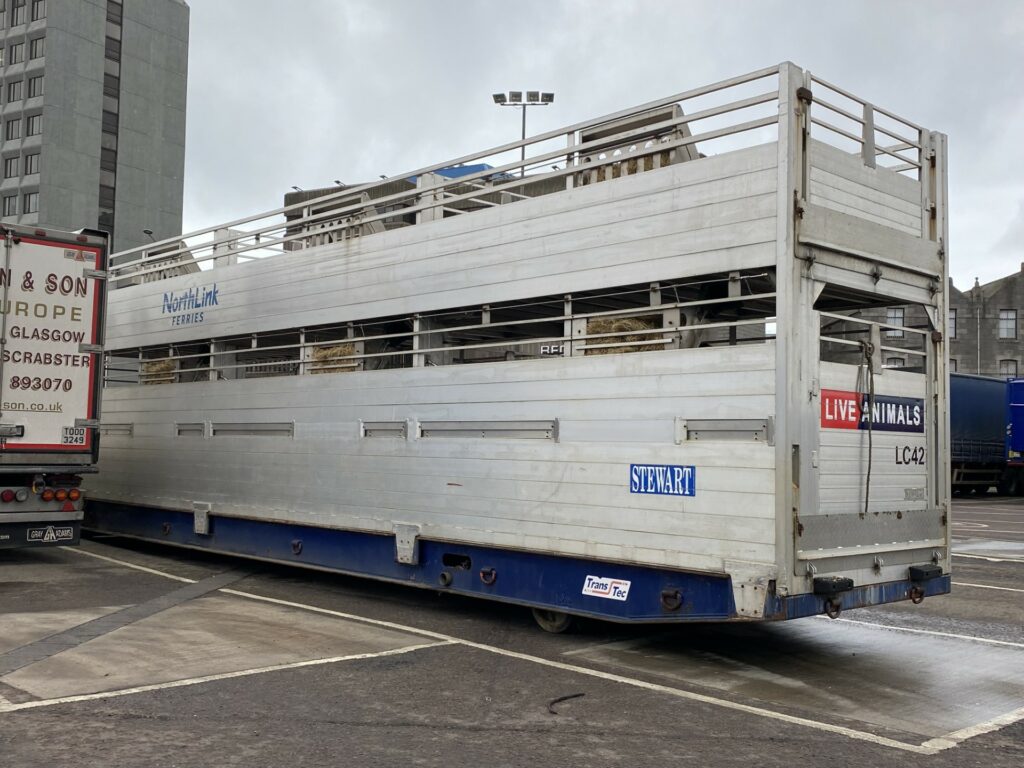– by C. Dwyer (SRUC)
Several journeys are often required in the life of livestock, e.g. to allow access to better grazing, trade in breeding stock and for fattening or for transport to markets and for slaughter. In some European countries this can also include transport of animals by ferry over sea when moving from islands to mainland. In Scotland these journeys are made by sheep particularly in the autumn from the Northern Isles to the mainland to access winter grazing. TechCare partners, SRUC, are involved in a study to combine analysis of existing data on animal transports and specific data collection on several ferry crossings where temperature, humidity and motion measures of the vessel will be related to animal behavioural responses during and after the journey. The project is jointly funded by TechCare and Scottish Government and will focus on the movement of sheep from the Shetland Isles and cattle from the Orkney islands, journeys which can take between 9-15 hours. The welfare of sheep making these journeys, and the value that making PLF assessments of the conditions under which they travel to assess risk factors for their welfare, is the specific focus of the TechCare component of this study. Over the last 20 years animals have travelled in specialised ‘cassettes’ in groups of approximately 35 sheep per pen. These cassettes allow animals to be given access to food and water, provide bedding, collect effluent and permit ventilation. Anecdotal evidence suggests that the animals travel very well in these conditions but may sometimes appear ‘tired’ if the crossings are rough, suggesting that sea conditions can be a factor in livestock welfare on ferry journeys. However, there is little objective scientific evidence to understand the animal’s experience of these types of journeys, and whether management can be modified to improve animal welfare. It is this evidence gap that this project is designed to address. Currently, sensors to monitor boat movements and to measure temperature and humidity at various points on the deck where the animals will travel, are being fitted to ferries and pilot data collection is underway to assess ferry movements. Cameras that can monitor the behaviour of sheep during the journey will be placed in the cassettes and ammonia and noise exposure will be monitored. Following pilot data collection, the main data collection on accompanied journeys by animals will be made on up to 6 occasions, monitoring a number of different cassettes placed in different locations on the deck. Video evidence will be analysed to assess the time sheep spend eating, drinking, ruminating and lying on a crossing, and to assess whether animals lose balance or fall during a crossing. These data will be compared to sensor-based measures of the forces animals experience during ferry transport and to match these to the animal’s welfare experience during transit. The use of PLF technology in this project will be critical to understanding the types of sea conditions that can impact on sheep welfare. Being able to provide evidence-based advice on when animal welfare will be most impacted by journey conditions will be important for providing animal welfare policy that protects livelihoods as well as animal welfare.


